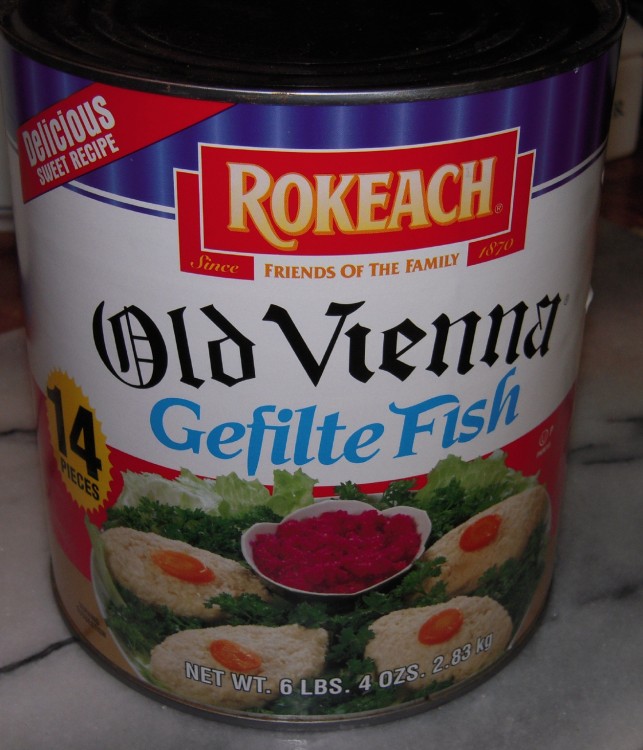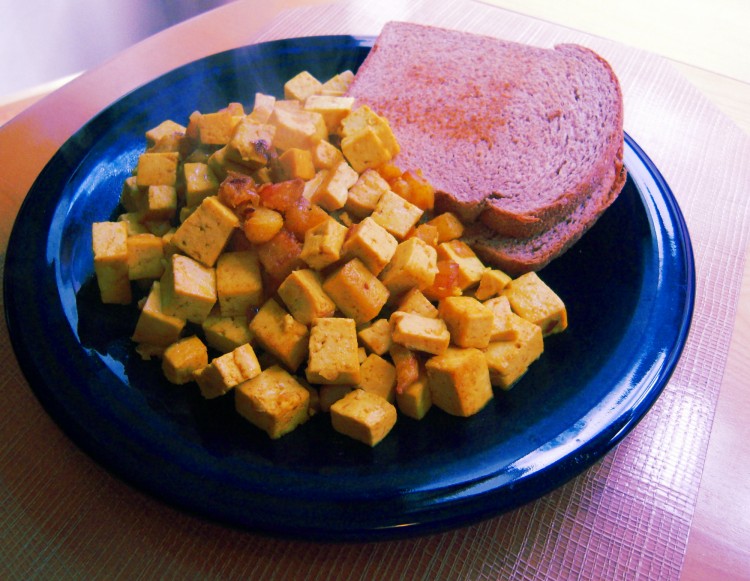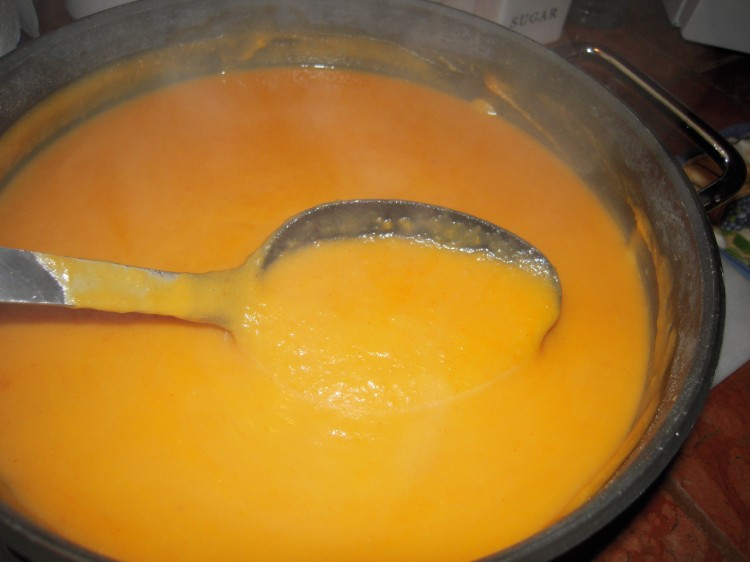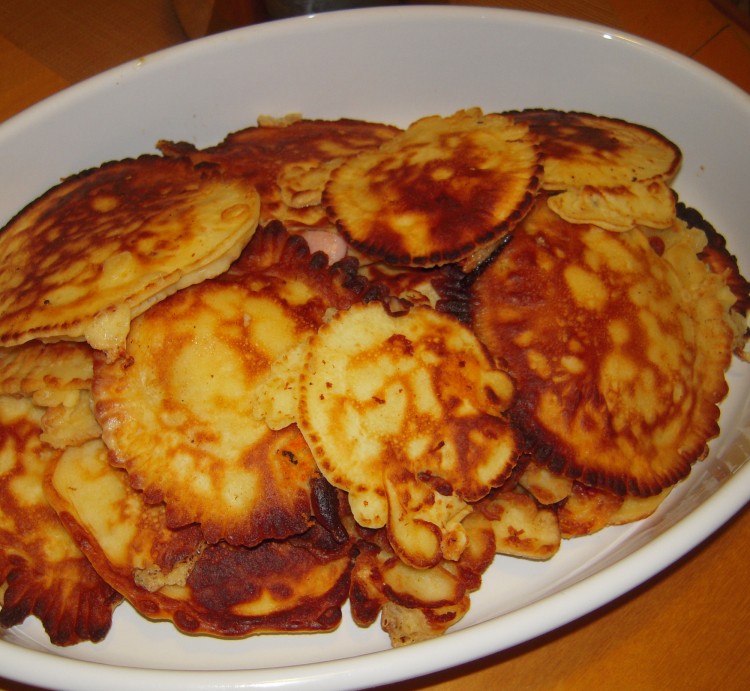
Han & Cheese Pancakes
When Steve and I were in Amsterdam, we had savory pancakes at a place near the Anne Frank House on the Prinsengracht. Since that time, I’ve made my own version at home. I even served them in cooking school as a lunch special, and they were a big hit, being something a little different but highly comforting.
We are not pancake and waffle people, and nothing is worse to me than all those plates you see these days piled high with pancakes, whipped cream, chocolate chips, fruit sauces, nuts and whatever else they load on there. When I have a pancake I want it with a little butter and real maple syrup, or savory, as I’m covering in this post.
For a basic ham and cheese pancake you need a decent pancake batter. Any plain version will do, but make sure it’s not sweet. Feel free to use my recipe, which I’ll provide.
I usually make my pancake batter by feel. I always have a batch of the dry part of the recipe on hand – like a home-made version of packaged baking mix, but better, because it doesn’t have any garbage, like anti-clumping agents or trans fat – and then I add the liquids of my choice.
To make the dry mix, whisk together: 6 cups all-pupose flour; 7-1/2 teaspoons baking powder; 3 teaspoons salt; 3 tablespoons white sugar. Make sure you check the expiration date on the baking powder. Store this in an air-tight container, and make only what you’ll use up in 4 months.
You can make all kinds of pancakes using this dry mix. My basic pancake is more like a thick crepe, so I tend to produce an eggy batter for that. I may use buttermilk or yogurt in place of the milk. It depends what I feel like, but the bottom line is that I use a blend of milk, eggs, fat and the dry mix.
For the savory pancake batter, I use: 1 egg, 1/8 cup of Canola oil and 3/4 cup of milk for every cup of dry mix. Whisk the egg, oil and milk, and then whisk in the dry mix until you get rid of most of the lumps. If you want it runnier, add more milk. Dryer, add more mix.*
Note: Serve all pancakes, including these, with a little real maple syrup. Please! Don’t use the stuff that’s nothing but sugar and high fructose corn syrup, which is most of what’s out there. Real maple syrup is worth the money. Finally, please don’t drown good pancakes in syrup. If you’re doing this there must be something wrong with the pancakes.
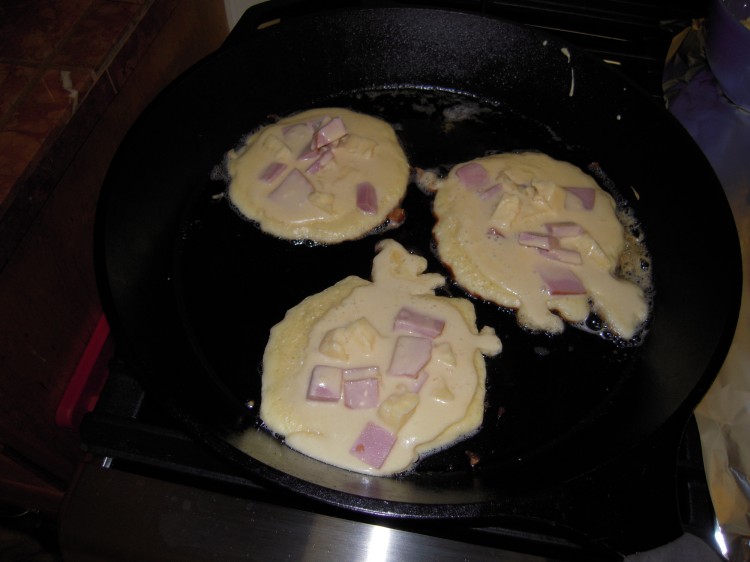
What they should look like after you ladle on the extra batter
Ham & Cheese Pancakes
Serves 2 – 3, or my husband, Steve
*1 batch pancake batter, as indicated above, or equivalent
1 cup sharp Cheddar cheese, in small cubes (more, if you want)
1 cup good cooked ham, in small cubes (more, if you want)
Canola oil for frying
Cast iron or other heavy pan or stove top griddle (this is important; don’t use a thin pan because the pancakes will burn)
If you are not going to serve them right out of the pan, which is what you should do because they are best this way, you’ll need:
Large, oven-proof dish to hold pancakes
Oven heated to 200 deg. F.
1). Heat a decent amount of Canola oil in pan over medium heat; turn heat down slightly when oil is hot. Check heat throughout cooking process.
2). Ladle batter into pan so you wind up with something like 5-inch pancakes. Bigger or smaller is OK, too.
3). Immediately sprinkle some cheese on top of each pancake, and then some ham.
4). Drizzle a little batter over the ham and cheese – not too much.
5). When you see bubbles on the surface of the pancakes, turn each over quickly. The cheese will really melt now and some will ooze out and go crispy in the pan, which is a good thing, but don’t let anything burn.
6). When pancakes are cooked through, which will not take very long, remove to oven-proof dish and place in oven.
7). Repeat until you’ve used up your batter.
8). Serve will a little real maple syrup on the side.


